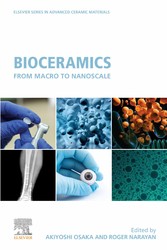Suche
Lesesoftware
Specials
Info / Kontakt

Bioceramics - From Macro to Nanoscale
von: Akiyoshi Osaka, Roger Narayan
Elsevier Reference Monographs, 2020
ISBN: 9780081030004 , 468 Seiten
Format: ePUB, PDF
Kopierschutz: DRM




Preis: 235,00 EUR
eBook anfordern 






